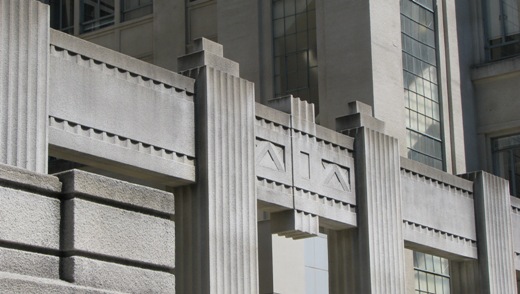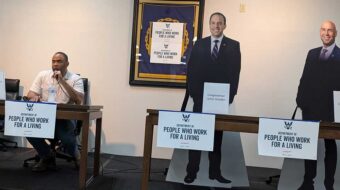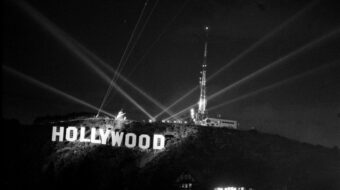
OAKLAND, Calif. – With official unemployment standing at 9.5 percent nationally and at 12.3 percent in California – and far higher in many hard-hit communities – interest is growing in the history and legacy of Depression-era New Deal programs like the Works Progress Administration.
At its biennial convention earlier this month, the California Labor Federation passed a resolution calling on the AFL-CIO and “all of organized labor” to fight for a WPA-type program “fully funded by the government,” providing “socially-useful” work paying union wages and benefits. The resolution points out that the WPA and related government programs were “a response to a tremendous mass movement” throughout the U.S. It urges support for the Oct. 2 march for jobs in Washington, D.C. backed by the NAACP, AFL-CIO, the Service Employees International Union and a broad range of organizations and individuals.
The San Francisco Labor Council passed a similar resolution earlier this year, endorsing the April 2010 national commemoration of the WPA’s 75th anniversary in Washington, D.C. and calling for “enactment of a similar bold sweeping jobs program today.”
And at its national convention last September, the AFL-CIO passed a resolution urging “a Works Progress Administration-style jobs program to rebuild America’s manufacturing sector and put 7 million Americans back to work immediately.”
The country’s largest employer during the Great Depression, the Works Progress Administration put more than 8.5 million people to work on projects ranging from public buildings to infrastructure to schools, hospitals and parks – to say nothing of murals, plays, music and literature – from 1935 to 1943.
The San Francisco Bay Area’s month-long LaborFest has featured several programs celebrating different aspects of the work of the WPA and related New Deal government agencies including the Public Works Administration (PWA) and the Civilian Conservation Corps (CCC). (Story continues below slideshow.)
Along with celebrations of the WPA’s cultural legacy, tours led by participants in California’s Living New Deal Project have highlighted public buildings and other facilities that continue in active use today, some seven decades after they were constructed.
Among many such public structures detailed on the project’s website, livingnewdeal.berkeley.edu:
- The Alameda County Superior Court building, in downtown Oakland, was built by the Public Works Administration. Today it houses the Registrar of Voters as well as the court and related government offices.
- Several buildings on the Berkeley High School campus. The shop and science buildings were built by the WPA. The Little Theater was a PWA project. Bas reliefs were created under the Federal Art Project. Berkeley High School, with over 3,000 students, is the city’s only high school, and is one of the largest high schools in northern California.
- Berkeley’s City Hall, the Martin Luther King Jr. Civic Center, was originally built for the Farm Credit Association. The six-story building is now Berkeley’s city hall.
- The Casting Pools and Anglers’ Lodge in San Francisco’s Golden Gate Park were built by the WPA. The complex has hosted several national casting tournaments over the years.
- A number of facilities at the Port of Oakland, including wharfs, berthing spaces, railroad tracks and warehouses, were built with participation of the WPA, PWA and other federal agencies.
- The Oakland-San Francisco Bay Bridge was a PWA project; the High Street and Park Street Bridges connecting Oakland with the city of Alameda were built with WPA and PWA participation.
- San Francisco’s Sunshine School, a PWA project, was originally a school for physically challenged children. It has been a continuation high school and now houses the Family Developmental center, part of the city’s Family Services Agency.
With such a living heritage from projects that flourished seven decades ago, imagine the effect a new, massive WPA-type program could have throughout the 21st century!
Photo: The Martin Luther King Jr. Civic Center in Berkeley, Calif. (Marilyn Bechtel/PW)











